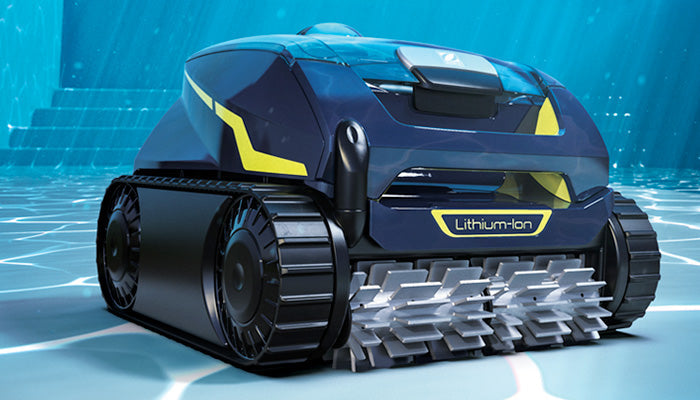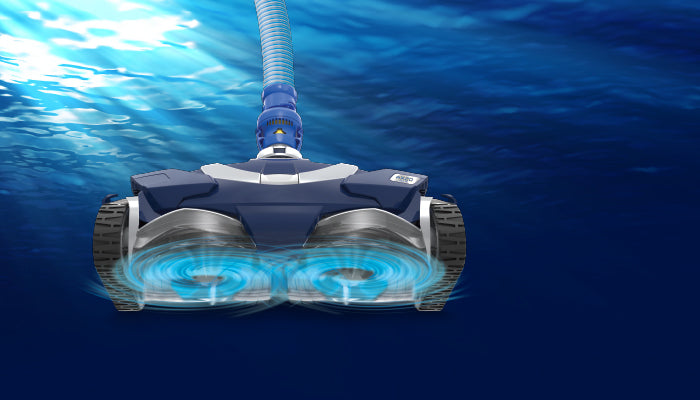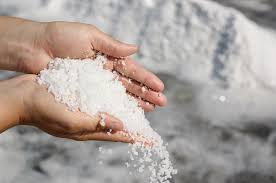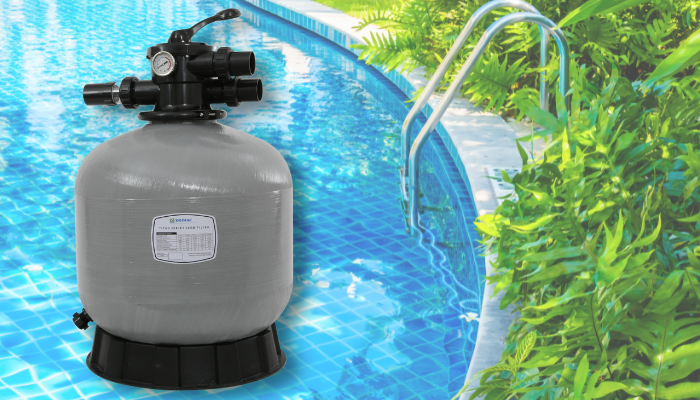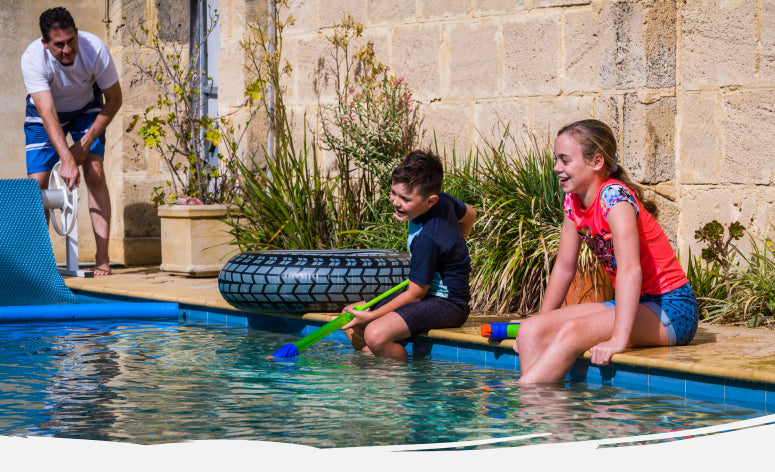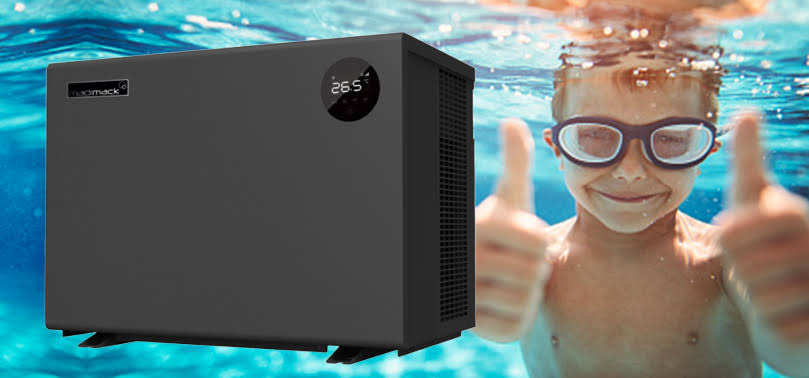Heat pump and temperature implications
Pool Heat Pumps: The Perfect Temperature and the Dangers of Too Hot
There's nothing quite like slipping into a perfectly heated pool on a cool evening or extending your swimming season well beyond summer. Heat pumps have revolutionised Australian pool ownership, making year-round swimming affordable and comfortable. But while we focus on the luxury of warm water, many pool owners don't realise that water temperature dramatically affects both pool chemistry and swimmer health. Too hot isn't just uncomfortable – it's potentially dangerous and expensive. Understanding the sweet spot for pool temperature protects your investment, your chemistry, and most importantly, your family's wellbeing.
How Pool Heat Pumps Work
Heat pumps don't generate heat like electric or gas heaters – they transfer it. They extract warmth from ambient air and concentrate it into your pool water, similar to how a reverse-cycle air conditioner works. This makes them incredibly efficient: for every kilowatt of electricity consumed, they deliver 5-6 kilowatts of heating. In Australia's mild climate, particularly in Queensland, New South Wales coastal areas, and Perth, heat pumps operate efficiently most of the year, making them the most economical heating option for extending swimming seasons.
The Ideal Pool Temperature Range
Comfortable Swimming: 26-28°C
This is the sweet spot for most recreational swimming. At 26-28°C, water feels comfortably warm without being bathwater-like. You can swim laps without overheating, children can play for extended periods safely, and most adults find this range perfectly pleasant. This temperature allows proper exercise and cooling – your body can still regulate temperature effectively through the water.
Therapy and Relaxation: 28-30°C
Warmer water suits gentle exercise, aqua therapy, elderly swimmers, or those who prefer spa-like conditions. At 28-30°C, muscles relax, joints feel more mobile, and the water provides therapeutic warmth. However, vigorous exercise becomes uncomfortable as your body struggles to dissipate heat. This range is better for lounging and gentle movement rather than active swimming.
Competition and Lap Swimming: 25-27°C
Serious swimmers prefer slightly cooler water. Olympic pools maintain 25-28°C specifically because athletes generate significant body heat during intensive exercise. Cooler water prevents overheating and allows sustained high-performance swimming.
When Water Gets Too Hot: The 32°C Threshold
Health Risks Above 32°C
Once pool water exceeds 32°C, you're entering dangerous territory. Your body's core temperature is approximately 37°C. When surrounding water approaches this temperature, your body's primary cooling mechanism – heat transfer to the environment – becomes ineffective. You can't cool down through the water anymore.
Heat Exhaustion and Heat Stroke Risk
Exercise or even active play in water above 32°C can cause heat exhaustion: dizziness, nausea, rapid heartbeat, confusion, and potentially heat stroke – a medical emergency. Children are particularly vulnerable because their bodies regulate temperature less efficiently than adults. What seems like a pleasantly warm pool can become dangerous during extended exposure, especially if combined with physical activity.
Cardiovascular Stress
Hot water increases heart rate and blood pressure as your cardiovascular system works harder trying to cool your body. For people with heart conditions, high blood pressure, or circulatory issues, water above 30-32°C poses serious risks. Even healthy individuals can experience elevated heart rates, lightheadedness, and circulation problems in excessively hot water.
Pregnancy Concerns
Pregnant women should avoid water temperatures above 32°C, particularly during the first trimester. Elevated core body temperature can affect fetal development. Most medical advice suggests keeping water temperatures at or below 30°C during pregnancy and limiting exposure time.
Dehydration
You still sweat in water – you just don't notice it. Hot pool water accelerates dehydration, particularly during exercise. Combined with Australia's dry climate and high temperatures, swimming in overly warm pools without adequate hydration can cause serious dehydration, especially in children who may not recognise or communicate thirst effectively.
What Hot Water Does to Pool Chemistry
Accelerated Chlorine Degradation
Here's the critical issue many pool owners miss: chlorine breaks down faster in warm water. For every 5°C increase in water temperature, chlorine consumption roughly doubles. A pool maintained at 28°C uses approximately twice as much chlorine as the same pool at 23°C. Push that to 33°C, and you're using 3-4 times more chlorine than at cooler temperatures.
This means your heat pump, while extending your swimming season, is simultaneously increasing your chemical costs. That perfectly heated pool requires more frequent chlorine additions, more testing, and more vigilant chemistry management.
Algae Growth Acceleration
Algae thrives in warm water. Above 30°C, algae growth rates increase exponentially. Combined with faster chlorine depletion, heated pools become algae breeding grounds if chlorination lapses even briefly. What might take a week to develop in cool water can appear overnight in warm water.
pH Instability
Warm water affects pH stability. As temperature increases, pH tends to rise, and the water's buffering capacity changes. You'll find yourself adjusting pH more frequently in heated pools, particularly if using liquid chlorine (which raises pH) to compensate for accelerated chlorine consumption.
Calcium Scaling Issues
Hot water increases calcium's tendency to precipitate out of solution, forming scale on tiles, in heaters, and on salt chlorinator cells. This is particularly problematic in Australian pools using bore water or hard scheme water. Heat pump heat exchangers are especially vulnerable to calcium buildup, reducing efficiency and potentially causing expensive repairs.
Increased Evaporation
Heated pools lose significantly more water to evaporation – potentially 50-100% more than unheated pools. In Australian conditions, this means constantly topping up water (increasing chemical costs as fresh water dilutes balanced chemistry), higher water bills, and increased environmental impact. Pool covers become essential, not optional, for heated pools.
Australian Climate Considerations
Summer Overheating
Here's an ironic problem: Australian pools can overheat naturally in summer without any heating system. Pools in Perth, Adelaide, inland NSW, and Queensland regularly reach 30-32°C just from ambient heat and solar gain. Dark pool surfaces, shallow pools, and lack of shade exacerbate this. Your heat pump becomes irrelevant – the sun is already overheating your pool for free.
Pool water above 32°C isn't refreshing – it's uncomfortably warm, provides no cooling relief from hot weather, and creates all the chemistry and health problems discussed above. Yet many Australian pools reach these temperatures naturally during January-February heatwaves.
Night Cooling
In many Australian regions, particularly inland areas and southern states, temperatures drop significantly overnight. An uncovered heated pool loses substantial warmth to cool night air, forcing your heat pump to work overtime reheating water daily. This cycle is expensive and inefficient.
Managing Pool Temperature Effectively
Set Appropriate Targets
Program your heat pump to maintain 26-28°C maximum. Resist the temptation to set it higher. This range provides comfort while minimising chemistry issues, health risks, and operating costs. If individual swimmers want warmer water, they can adjust gradually – but starting cooler is safer.
Use Pool Covers
This is non-negotiable for heated pools. Quality pool covers reduce heat loss by 50-70%, dramatically reducing heat pump running costs while simultaneously reducing evaporation and chemical loss. Covers also prevent natural overheating in summer by blocking solar gain. The investment in a good cover often pays for itself within one season through reduced heating and chemical costs.
Summer Management
When ambient temperatures push pool water above 30°C, consider active cooling strategies: run your heat pump in reverse if it has cooling capability, run your pool pump at night to expose water to cooler air, add a water feature or fountain to increase evaporative cooling, or partially drain and refill with cooler water during extreme heat events.
Monitor Temperature Daily
Don't just set and forget your heat pump. Check pool temperature daily during heated periods. Modern heat pumps have digital displays showing exact temperature – use them. If temperature exceeds 30°C, take action: turn off heating, add cooler water, or implement cooling strategies.
Adjust Chlorination
Increase chlorine dosing when heating your pool. If you normally maintain 2 ppm at 24°C, aim for 3 ppm at 28°C to compensate for accelerated consumption. Test more frequently – daily during warm periods rather than weekly. Consider switching from stabilised to liquid chlorine in heated pools to avoid cyanuric acid accumulation from increased chlorine demand.
Enhanced Filtration
Run your filter longer when the pool is heated. Warm water requires more filtration time to maintain clarity and prevent algae. Increase from 6-8 hours daily to 8-10 hours when heating, and consider continuous running during periods of heavy use or marginal chemistry.
Heat Pump Sizing and Efficiency
Proper heat pump sizing for Australian conditions matters enormously. Undersized units run constantly, wear out prematurely, and struggle to maintain temperature during cool periods. Oversized units cycle inefficiently and cost more upfront without proportional benefit.
As a rough guide, you need approximately 1kW of heat pump output per 10,000 litres of pool volume in temperate Australian climates, more in cooler southern regions or for year-round heating. A 50,000-litre pool typically needs a 10-12kW heat pump for efficient operation. Consult with professionals who understand your specific climate, pool exposure, and desired swimming season.
Cost Reality Check
Heat pumps are efficient but not free to run. A typical 10kW heat pump in NSW or Queensland might cost $5-15 daily to maintain 28°C during cooler months, depending on electricity rates, ambient temperature, and whether you use a cover. Over a 6-month extended season, that's $900-2,700 in electricity, plus increased chemical costs from accelerated consumption.
Factor in these ongoing costs when deciding whether to heat your pool. The upfront heat pump investment ($3,000-8,000 depending on size and quality) is only part of the equation. Ongoing running costs, increased chemical usage, and potential maintenance from calcium scaling or chemistry issues add substantially to lifetime costs.
Fun Fact: Your body's ability to cool itself through water stops working completely when water temperature reaches approximately 35°C – about the same temperature as human skin. At this temperature, there's no thermal gradient for heat transfer, so your body can't dissipate heat through the water at all. In fact, if you exercise vigorously in 35°C water, the water actually starts heating your body rather than cooling it, because your muscles generate heat faster than it can dissipate. This is why spas and hot tubs are limited to 40°C maximum and why soaking time is restricted – any hotter or longer risks genuine heat stroke. Your pleasant 28°C pool sits safely below this threshold with a comfortable 7-9°C temperature difference allowing your body to shed heat effectively. But that comfortable margin disappears rapidly as water temperature climbs above 32°C!
The Bottom Line
Pool heat pumps offer wonderful benefits – extending swimming seasons, comfortable year-round exercise, and therapeutic warmth for those who need it. But they require intelligent management. The ideal temperature range is 26-28°C, balancing comfort with chemistry management and health safety. Above 30°C, problems accelerate rapidly. Beyond 32°C, you're risking swimmer health, accelerating chlorine consumption dramatically, encouraging algae blooms, and potentially damaging equipment through scaling.
Australian pools face unique challenges: natural summer overheating requiring cooling rather than heating, high evaporation rates, and year-round swimming potential that tests equipment durability. Successful heated pool ownership requires appropriate temperature targets, quality pool covers to retain heat and prevent loss, enhanced chemical monitoring and dosing, longer filtration times, and daily temperature monitoring to prevent overheating.
Don't set your heat pump to maximum and forget about it. Instead, aim for that comfortable 26-28°C sweet spot, cover your pool religiously, monitor chemistry closely, and adjust chlorination for warm water. Your pool will be safer, your chemistry will be more stable, your equipment will last longer, and your operating costs will be manageable. Most importantly, your family can enjoy that perfectly heated pool without the hidden dangers of excessive temperature – comfortable, refreshing swimming that extends your pool enjoyment without compromising health or breaking the bank.
